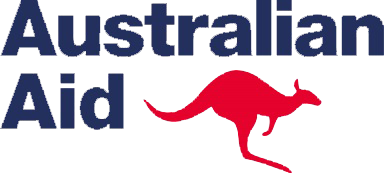- Details
- Category: Artikel Tematik
- Hits: 9909
Oleh: Sisilya Bolilanga; Editor: Iko Safika

- Details
- Category: Berita Media (News)
- Hits: 3154
the Jakarta Globe, 10 September 2014
 Jakarta. Indonesia, one of only three countries in the Asia-Pacific region that is seeing a trend of increased HIV infections, must plug a $30 million funding gap in its fight against HIV, a UN health official said on Wednesday.
Jakarta. Indonesia, one of only three countries in the Asia-Pacific region that is seeing a trend of increased HIV infections, must plug a $30 million funding gap in its fight against HIV, a UN health official said on Wednesday.
President-elect Joko Widodo, who won a July election, should build on the policies implemented by the outgoing administration, Cho Kah Sin, Indonesia country director for the United Nations Programme on HIV and AIDS, told Reuters.
Indonesia's five-year strategic plan to combat HIV/AIDS ends this year and domestic funding of the plan is about 40 percent, much lower than a 70 percent target, Cho said.
While the domestic budget for tackling HIV/AIDS has increased from $27 million in 2010 to $37 million this year, the current funding gap is estimated at about $30 million, and it is expected to increase to about $175 million by 2020.
- Details
- Category: Berita Media (News)
- Hits: 3089
Indianapolis Recorder News, 11 September 2014
In the early 1980s' a three lettered acronym followed by a four character, one-syllable word entered the American vernacular and changed the course of history around the world. HIV/AIDS, formerly known as "gay cancer" was originally understood to be an immune disorder that primarily affected white, gay males who lived in large cities such as New York City and Los Angeles.
Larry Jimison, executive director of Brother's United, a nonprofit agency that serves the African-American LGBTQI community in Indianapolis, said initially news of this virus did not hit home for him. He, like many others assumed the disease did not have any true point of relevance for him due to race and location. That attitude, in his opinion, served to be detrimental to many African-American homosexual males. "It (the attitude) made it to where we couldn't receive appropriate HIV prevention messages," said Jimison. "It created a false sense of security because (Black men) didn't fit those original stereotypes of someone who could be at risk of infection."
- Details
- Category: Berita Media (News)
- Hits: 3026
the Express Tribune, 11 Sepember 2014
 PESHAWAR: The absence of information on youth behaviour serves as a major cause of insecurity and instability in Pakistan, said experts at a media sensitisation workshop held on Wednesday. The session sought to improve the quality of media coverage of issues faced by the younger population.
PESHAWAR: The absence of information on youth behaviour serves as a major cause of insecurity and instability in Pakistan, said experts at a media sensitisation workshop held on Wednesday. The session sought to improve the quality of media coverage of issues faced by the younger population.
The workshop was organised by Ehad organisation which advocates parents and caretakers to provide proper guidance to their children. Journalists from print and online media participated to gain the necessary skills to report on youth issues in a responsible manner.
Speaking at the workshop, master trainer and communication expert Wajih Akhtar pointed out there were limited insights on the incidence of child abuse, substance abuse and HIV/AIDS in young people. This, he said, causes parents to take ill-informed decisions and develop negative perceptions.
- Details
- Category: Berita Media (News)
- Hits: 3186
Online Athens, 11 September 2014
The number of people in Georgia with HIV/AIDS is on the rise, and is likely to keep increasing, researchers and public health administrators said at a conference on the University of Georgia campus Wednesday.
The increase could be dramatically slowed if more people who contract the virus are diagnosed, and if more diagnosed people get regular medical treatment to suppress HIV, according to Tanjina Shabu, a biostatistician working with the Georgia Department of Public Health.
About 80 percent of those who get continuing treatment are viral-suppressed, when levels of HIV virus in their blood stream is low or undetectable.
© 2025 Kebijakan AIDS Indonesia

